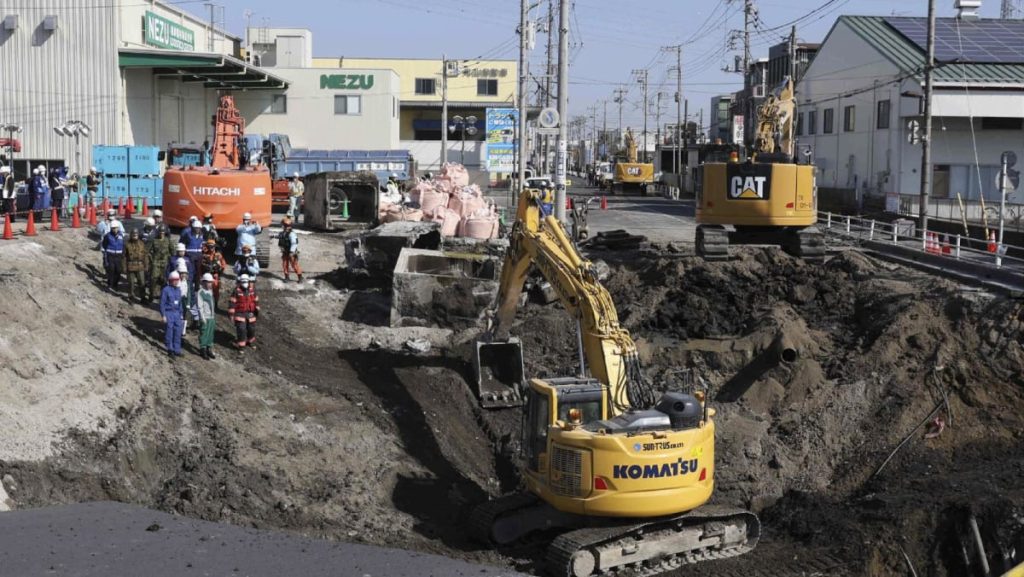The incident in Yashio, Japan, where a sinkhole dramatically expanded and merged with another cavity, serves as a stark reminder of the deteriorating state of aging infrastructure in many developed nations, particularly concerning underground water and sewage systems. The initial hole, measuring approximately 5 meters in diameter, rapidly escalated into a much larger issue, demanding immediate action from local authorities. To mitigate the escalating sewage spill, residents were urged to drastically reduce water usage for several hours, adding to existing requests for conservation amidst a population of 1.2 million affected by the disruption. The community response highlighted the societal impact of such infrastructural failures, with local businesses like onsens (public bathhouses) stepping up to offer free services to residents deprived of water access in their homes.
The Yashio sinkhole incident underscored a much broader, simmering problem: the widespread corrosion and decay plaguing Japan’s aging subterranean pipe networks. Much of this critical infrastructure was installed during the country’s post-World War II economic boom, leaving a substantial portion of these systems nearing or surpassing their intended lifespan. Experts, such as Shinya Inazumi, a professor of geotechnical engineering, point to this aging infrastructure as a significant vulnerability. With the 50-year service life of many pipes already elapsed, the risk of similar failures looms large across the nation. Projections paint a concerning picture: in little over a decade, a staggering 40% of Japan’s sewage pipes will have exceeded their designed lifespan, placing increasing pressure on authorities to address this ticking time bomb before further widespread disruptions occur.
The immediate cause of the Yashio sinkhole was attributed to the corrosion and subsequent puncture of aging sewage pipes. This deterioration allowed surrounding soil to infiltrate the pipe system, gradually creating a hollow space beneath the road surface. This process, often insidious and undetectable until a catastrophic collapse occurs, highlights the challenges in managing aging infrastructure. Regular inspections and proactive maintenance are crucial, but the sheer scale of the problem, combined with the often inaccessible nature of underground systems, presents significant logistical and financial hurdles.
Beyond the issue of age, another contributing factor to such infrastructural failures is the increasing intensity and frequency of extreme weather events, often exacerbated by climate change. Professor Inazumi emphasizes the role of heavy, localized rainfall in accelerating the erosion process around already weakened pipes. The sheer volume and velocity of water inundating the ground can rapidly enlarge existing voids, exacerbating the risk of sinkhole formation. This interplay between aging infrastructure and the intensifying effects of climate change presents a complex challenge, requiring a multifaceted approach to mitigate future risks.
The Yashio incident serves as a potent illustration of the need for proactive infrastructure management and investment. Simply reacting to failures after they occur is not a sustainable strategy. A comprehensive approach involving regular inspections, preventative maintenance, and strategic replacement of aging pipes is crucial. Furthermore, incorporating climate change projections into infrastructure planning is essential to ensure new and repaired systems can withstand the increasing stresses of extreme weather events. This requires a significant financial commitment, but the long-term costs of inaction, both economic and societal, are far greater.
The lessons learned from the Yashio sinkhole extend beyond Japan’s borders. Many developed nations face similar challenges with aging infrastructure, and the increasing prevalence of extreme weather events underscores the urgency of addressing these issues. The incident in Yashio serves as a wake-up call, highlighting the critical need for proactive investment in resilient infrastructure to safeguard communities and prevent future disasters. Ignoring these warning signs will only lead to more frequent and potentially more devastating consequences. The time for decisive action is now.

